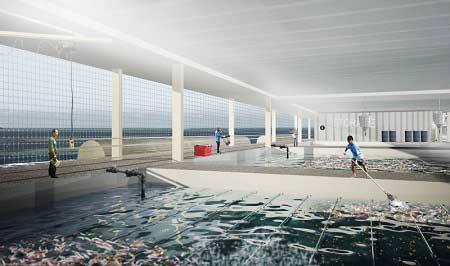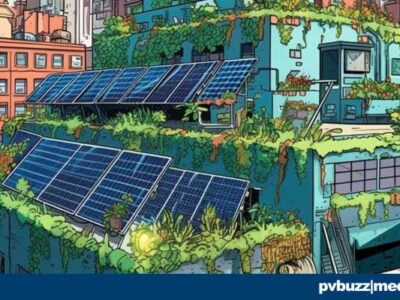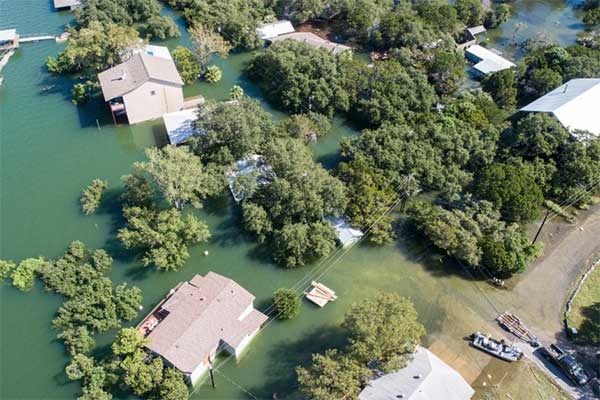The world population is predicted to grow from 6.9 billion in 2010 to 8.3 billion in 2030 and to 9.1 billion in 2050. By 2030, food demand is predicted to increase by 50% (70% by 2050). The main challenge facing the agricultural sector is not so much growing 70% more food in 40 years, but making 70% more food available on the plate.
Forward Thinking Architecture, a Barcelona-based group are focusing on sustainable design, imagines large, three-story farms that float through the ocean powered by solar panels to solve this issue. The Smart Floating Farms would house massive hydroponic farms and, beneath them, fish farms, making each barge a nearly self-sustaining, veritable grocery list of items for a clean, healthy diet.
[Max Plenke/Tech.Mic]

The company says the project design is flexible enough to adapt to local food production needs and can be located close to many mega-cities or dense populated areas with water access. Photo Credit: Forward Thinking Architecture
The concept leans on vertical farming technology, a new-age agricultural method of growing food in soil-less greenhouses. They’re stacked high with planter beds filled with nutrient-enriched water. The idea has transformed warehouses and parking garages around the world into urban food-producing powerhouses, making it a promising field in agribusiness. Designers estimate the solar-powered farm could grow upwards of 8,152 tons of vegetables and 1,703 tons of fish annually in a facility 200 x 350 metres wide.
[Zi-Ann Lum/The Huffington Post Canada ]
“Facing the current challenges of cities growing, land consumption and climate change, I believe projects like the Smart Floating Farms can help change some of the existing paradigms which have led us to the present situation and open new possibilities which can improve the quality of human life and the environment,” said SFF project director Javier F. Ponce on the company’s website.
[Lorraine Chow/EcoWatch]
The farm would also contain wind turbines and wave energy converters, to make the most of the natural energy available to it. And there would be a desalination plant and an on-board slaughterhouse and processing and packaging area, so that products could be sent straight to shops or consumers, reducing the food miles and carbon footprint of each product.
[Fiona McDonald/ScienceAlert]
The project is a flexible one able to adapt its dimensions to the local food production needs and can be located close to many mega-cities or dense populated areas with water access (sea-lakes-rivers) , in example but not restricted to, places like NY, Chicago, Seattle, Tokyo, Singapore, Mumbai, Jakarta, Cairo, HK, Shangai, Sao Paulo, Doha, Osaka, Bangkok,Shenzen,Bahrain,Abu Dhabi,Dubai, Istanbul, Los Angeles, Montreal,Jeddah,Kuwait city, Seoul, Karachi, Sydney, and a long etc.
This is not science fiction. It is a serious and viable solution. It is not meant to ‘solve’ all of humanity’s hunger problems or to replace existing traditional agriculture; this is not the idea at all. The driver behind the project is to open a new initiative which can be complementary and compatible with other existing production methods in order to help reduce food risk associated problems in different areas of the globe.













Comments